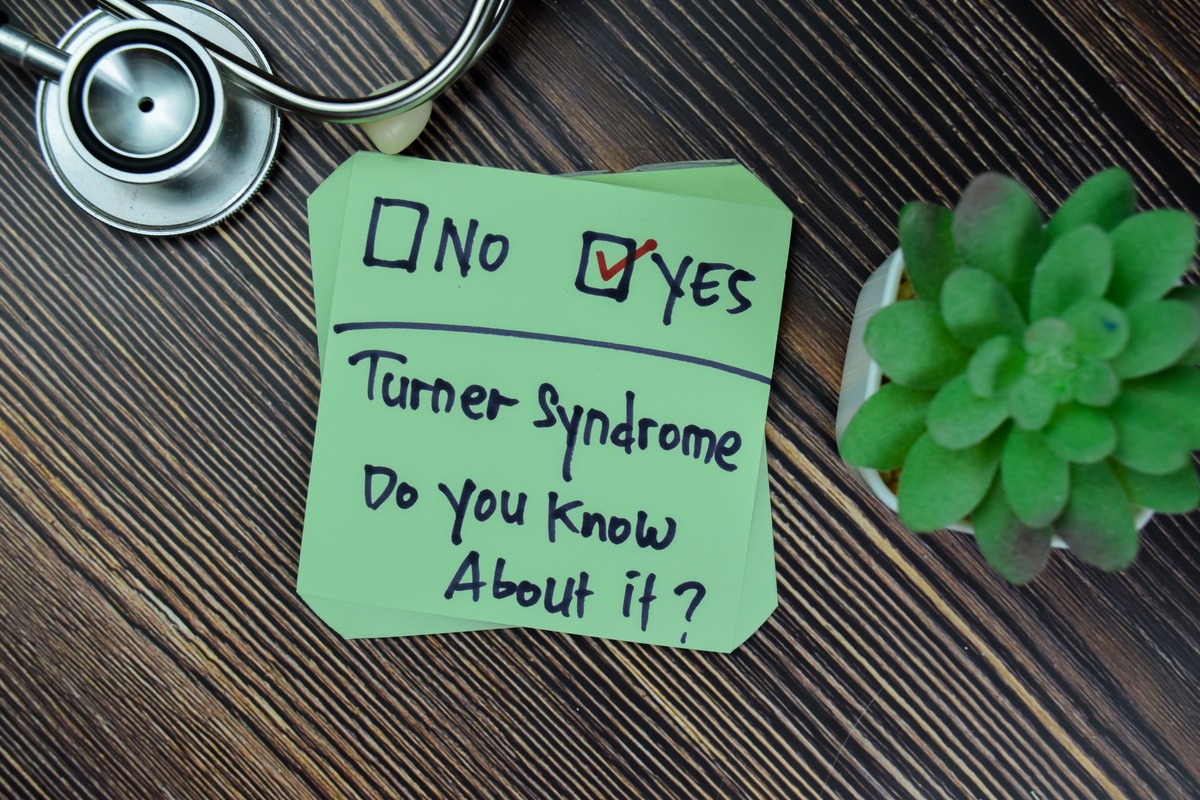One in every 2,000 newborn girls is affected by Turner syndrome and a better understanding of this disease can help you cope. Learn what Turner syndrome is, its causes, symptoms, diagnosis and treatment.
What is Turner syndrome?
What are the types of Turner syndrome?
The different types of Turner syndrome include –
Monosomy X: Every cell contains one X chromosome rather than the usual two. This type of anomaly is present in about 45% of those with this condition and can develop randomly, from either the mother’s egg or the father’s sperm
Mosaic Turner syndrome: This type, also known as 45X Mosaicism, accounts for about 30% of cases of Turner syndrome. The X chromosomes are in two pairs in some of the baby’s cells (normal) while others have only one (Turner syndrome). It happens early in pregnancy during cell division
Inherited Turner syndrome: In this condition, rarely, babies may have inherited Turner syndrome, meaning that their parent (or parents) had it at birth and passed it on to them. The X chromosome’s missing portion is typically the cause of this
Y chromosomal material: Occasionally, cells have a copy of the X chromosome along with some Y chromosomal material. Although these people develop biologically as females, the Y chromosome material raises the chance of gonadoblastoma, a type of cancer
What are the symptoms of Turner syndrome?
The two main clinical characteristics of Turner syndrome include –
- Short stature
- Non-functioning ovaries (loss of sexual development and infertility)
Other characteristics include:
- Swollen hands and feet
- Wide-spaced nipples with a broad chest,
- Droopy eyelids,
- A low hairline
- Low-set ears
- Numerous little brown moles on the skin
- Webbing of the neck
- A short fourth toe and short fingers
- Soft fingernails that curl upward at the end
- A small jaw and narrow, high-arched palate that could make eating difficult or lead to dental issues
During preganancy, the baby can exhibit certain features in an ultrasound –
- Abnormal fluid collections such as a significant fluid buildup on the back of the neck (oedema)
- Heart conditions
- Irregular kidneys
How is Turner syndrome diagnosed?
A lab test will be performed to examine your child’s chromosomes if the doctor suspects that your child has Turner syndrome based on signs and symptoms.
A healthcare professional can identify Turner syndrome at any stage of a child’s development. The problem can occasionally be detected before birth:
Maternal serum screening: In this screening mother’s blood must be drawn. It looks for indications that the infant is more likely to have a chromosomal issue. The prevalence of this screening is higher in older pregnant women.
Amniocentesis and chorionic villous sampling: Amniotic fluid or placental tissue is examined using this test. The fluid or tissue is subjected to a karyotype ( complete set of chromosomes) investigation by medical professionals. The outcomes might indicate that the infant has Turner syndrome.
Prenatal ultrasound may reveal that the infant has some TS characteristics, such as fluid-related swelling in the neck
In other instances, a child’s symptoms during infancy or shortly after birth lead to a diagnosis. However, some people aren’t given a Turner syndrome diagnosis until adulthood. These women might experience puberty and start having periods, but they have early menopause.
What are the treatment approaches for Turner syndrome?
Growth hormone: Many girls now have a better future since growth hormone allows them to grow to a typical adult height (often over 5 feet). Growth hormone therapy is normally advised to raise the height as much as possible during early childhood till the early teen years. This medication is typically administered daily as an injection of recombinant human growth hormone
Hormone replacement therapy: This procedure simply requires taking the sex hormones oestrogen and progesterone to encourage breast development, menstruation, and other bodily functions. The optimal age to start varies, but is typically around the age of twelve. Over the course of two to three years, the oestrogen dosage is progressively increased and progesterone is added to the near the end of puberty. This mimics the natural hormone synthesis from an active ovary
What are the complications of Turner syndrome?
- Heart problems: The aorta is a major blood vessel that branches off the heart and carries oxygen-rich blood to the body. Heart abnormalities frequently include issues with this aorta
- High blood pressure
- Vision loss
- Hearing problems
- Kidney problems
- Infertility
- Mental health issues
How can I live with Turner syndrome?
Each girl with TS experiences life differently – some experience greater obstacles than others. Some people may require assistance from an early age; for example, some TS newborns require assistance with feeding while some young children may require speech treatment. Other infants and young children don’t seem to have any developmental issues.
School and educational issues:
Some childen experience specific difficulties and hearing difficulties, and these can be resolved by alerting their teacher to the problem. Some girls with TS may also require assistance in maths or writing, although each person’s needs are highly different. Read books and articles together with your child about women who live with this condition in order to motivate and encourage them.
Building self-esteem:
If a child believes they are different because they are small, their self-esteem needs to be boosted. Ensure that their clothing fits them well and is appropriate for their age. You might have to make something for them or modify store-bought clothing. Bicycles and other personal items should be suitable for their age rather than just their size. Avoid treating them like children instead encourage them to be independent and participate in their friends’ activities.
Making friends:
Always try to build good relationships with other people. Often, it only takes a few reminders, such as emphasising the value of taking turns and paying attention to others.



